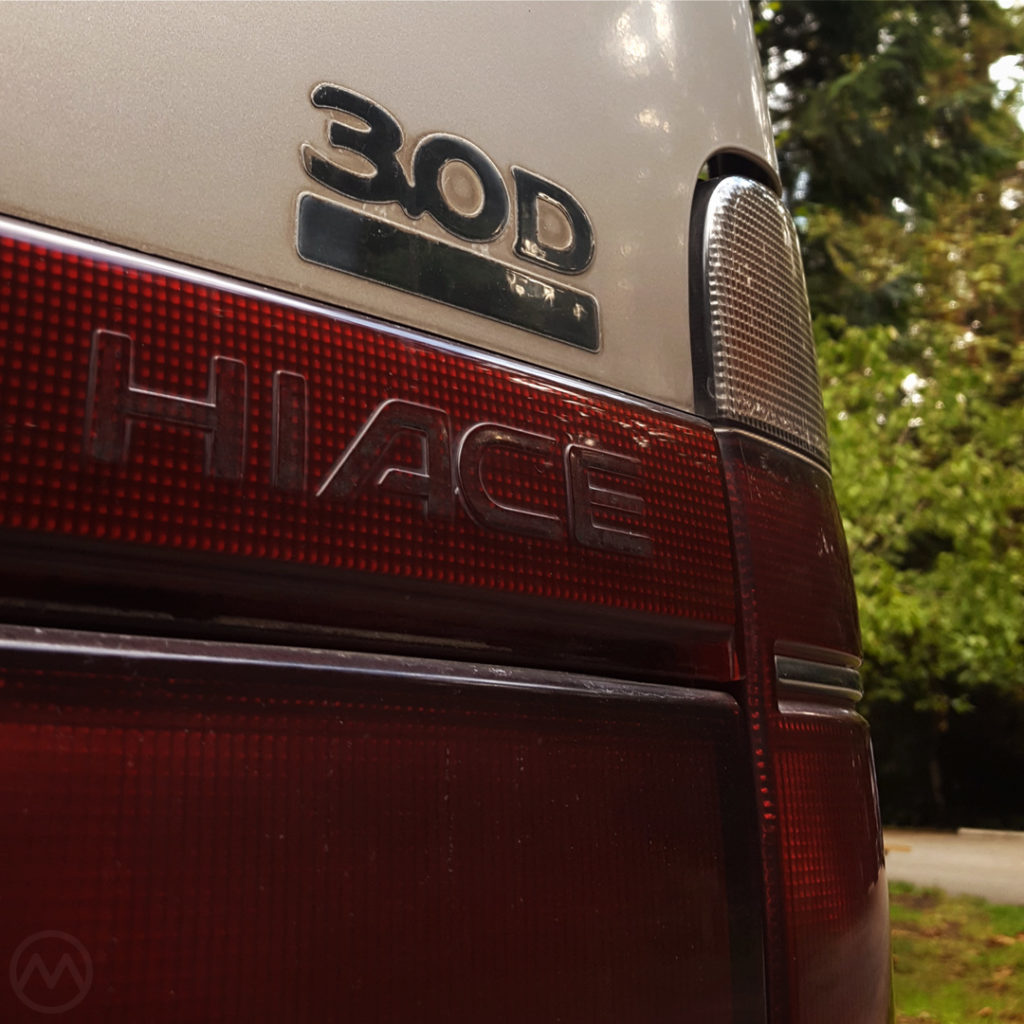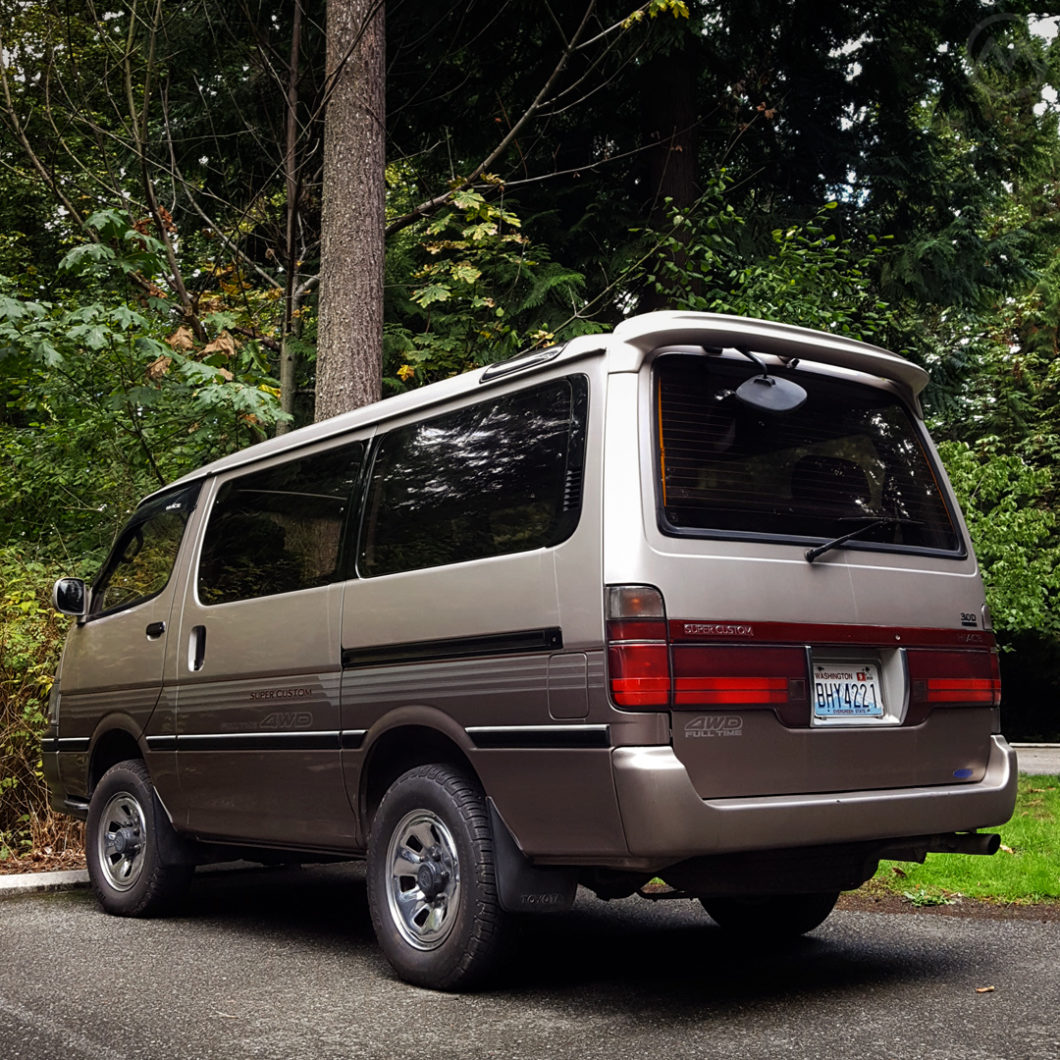In its first few years, it was only a Toyota, but the 4th-gen HiAce van has been in production in various countries since the spring of 1989 and is still being churned out in fair numbers in China. A big van also built as a minibus, eventually it spawned more than 30 different variants, most commercial vehicles, but this one is an early JDM civilian version.
At the end of the 1980s various Japanese manufacturers were building some serious off-road capable vans for people who wanted more than an SUV. The 4th HiAce (H100) was the latest in a long line of big box Toyotas that were increasingly able to go anywhere.
Aces
The first HiAce (all of Toyota’s proper vans were “aces,” MiniAce, ToyoAce, Lite-Ace, etc.) bowed in 1967 as a middle-ground between a very small van and a proper minibus and Toyota’s Coaster minibus and ToyoAce trucks.
The HiAce’s cab-over forward-control setup was as much a result of Japanese tax regs as trying to use the entire space for passengers and cargo. 4WD capability came to the vans in their second generation in the late 1970s, and a modernized, squared-off HiAce replaced that van in 1982.
Always popular as campers and recreational vans, more technology and creature comforts filtered in during the 80s, highlighted by an executive-oriented concept car called the “Toyota Mobile Lounge” at the 1987 Tokyo show.
The over-the-top mobile lounge had loads of things ordinary buyers probably wouldn’t use – like a built-in fax machine (in 1987, the fax machine was the future), but it telegraphed a more upscale 4th gen van, which arrived about 18 months later.
The range of HiAces was broad – with gas and diesel engines, multiple lengths, and either rear drive, or part- or full-time 4WD optional. The choice for the truly go-anywhere buyer was the full-time 4WD 3.0 diesel, using the 1KZ-TE turbodiesel four shared with the Land Cruiser Prado – the kind of thing you could cross the desert in or rack up 500,000KM on.
Not For North America
These vans weren’t offered in North America, where Toyota chose to concentrate on minivans, but like the Mitsubishi Delica, they gradually became popular first in British Columbia (with a 15-year import rule) and later in the Western U.S. In Asia, production lasted until 2004 at Toyota and continues in China.

The Delica is the most popular of the JDM Go-anywhere vans in the USA, but the HiAce can also be found on Northwest trails and mountains, or in the deserts of California and Nevada in fair numbers. They’re excellent for camping just as they were intended, be it in Oregon or Hokkaido.
In China the trucks were produced by multiple outfits, legitimate and not so much.
In Japan, the 4th gen lasted 15 years, in part because it was a fairly simple but good design, and in part because of Japan’s “decade of stagnation,” a situation which effected vans and trucks far less than niche sports cars, but also extended their lives. A more conventional-looking version, the Grand HiAce/Granvia introduced in 1995, mounted the engine further forward and a more minivan-like experience.

